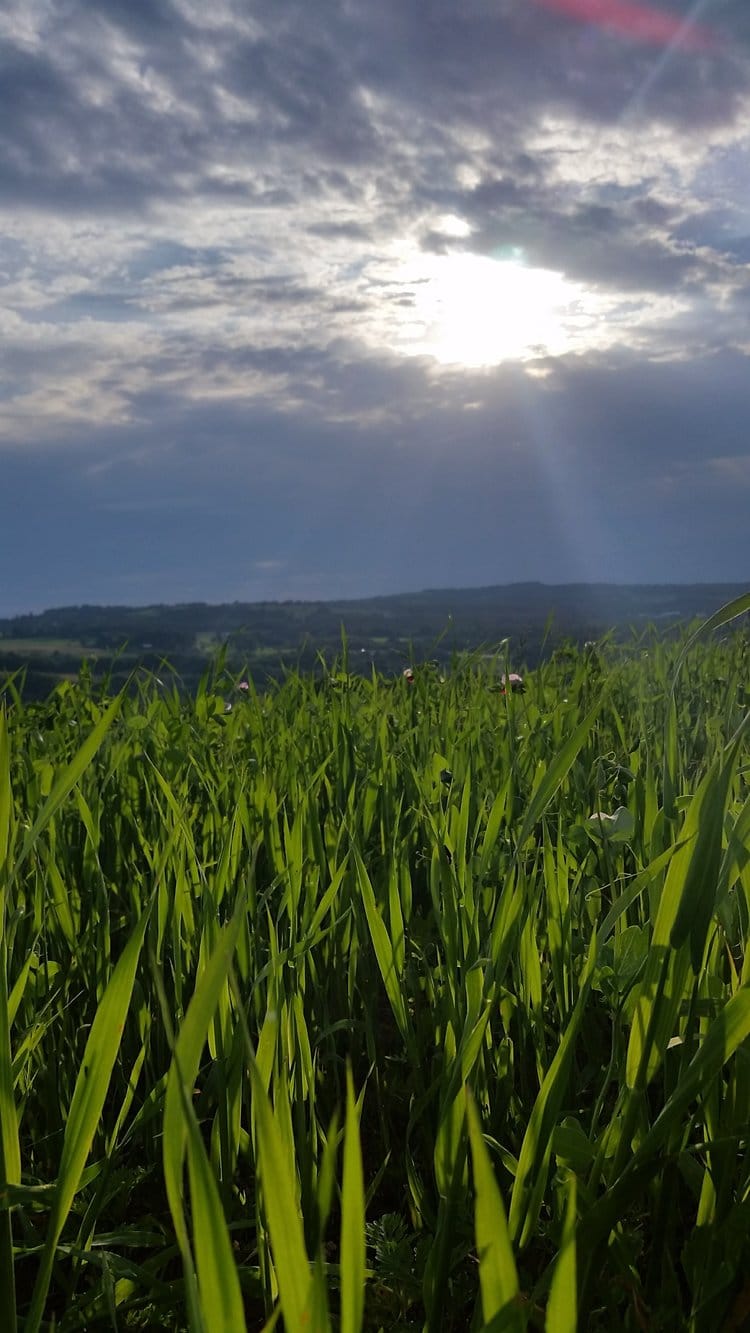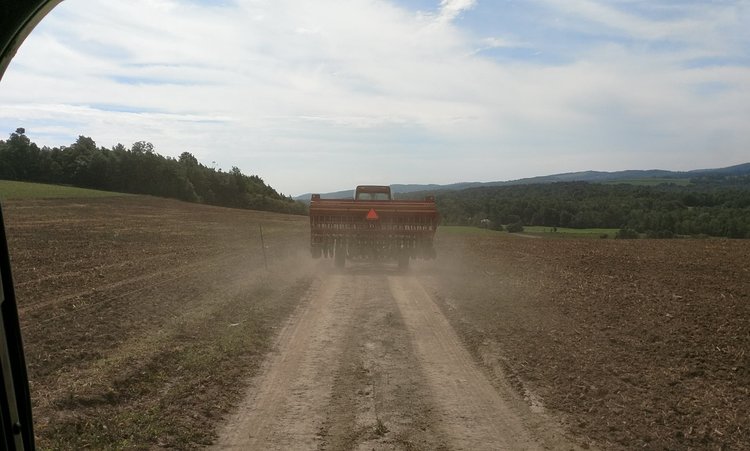Clouds roll in across the valley bringing another storm.
While this year hasn’t been the worst for rain, dairy farmers always contend with climate. Dairy farmers have been experiencing and adjusting to droughts, heat waves, floods and other short- and long-term climate issues for many generations.
Sarah Ficken, a dairy farmer in Madison County, New York, says this year featured a cold, late Spring and is turning into a hot, dry summer. But her farm, New Moon Dairy, says Sarah, experienced lots of rain last year. Here’s the blog Sarah wrote about it, originally published June 01, 2019:
It’s raining, again!!
It’s raining. Again.
In between raindrops we were able to get in a seeding of peas and oats. Seeding peas and oats definitely wasn’t our initial plan, but we are grateful to have them in. If we are counting, I think the Peas and Oats are Plan D or E. We purchased them last year as a nurse crop for a spring alfalfa seeding, but after a long winter and a sudden switch to summer, there wasn’t the time to get a Spring seeding (Plan A) in. Last August we were able to plant some of our fields to alfalfa, but the spigot in the sky opened up suddenly and didn’t shut off until October, so where we had planned to do a fall seeding (Plan B) or cover crops (Plan C), the field lay barren all winter, but for the crop stubble. The Alfalfa seed still sits patiently, stored for what was to be a Spring seeding (Plan D), but the ground was too wet and for a high cost, perrennial crop, you need the conditions to be just right. And so, Plan E was born. We planted our nurse crop as an early season annual and will harvest it, plant a summer annual, and hope to get our fall seeding of alfalfa in late in the summer.

We have had good luck growing peas and oats in prior years and hope for similar yields this year.
We don’t dare let the cows out onto pasture in this weather. They would do a lot of damage to our fields, and Pasture 3 would quickly become too slippery with mud. Our heifers and far off dry cows are at “summer camp”, but our girls that are closer to calving are still in the barn.
Three summers ago we experienced a terrible drought. We went weeks and weeks without seeing a drop of rain. The earth was parched and hard and even the slightest movements of the tiniest toddler kicked up dust. I found myself getting increasingly agitated. Almost annoyed by the ceaselessly “good” weather that demanded my full attention be kept outside. When the sunlight breaks before 5 and keeps on until almost 10, the days very quickly get long. And then the rain came. Calm and gentle, quenching the earth and forcing us inside. Inside to quiet conversation, restorative sleep, and catch up on all things housework.

In previous years we have been challenged by drought, but this year we are working to adapt to exceedingly wet conditions.
With this year’s rain, I feel the opposite. I’ve managed to do umpteen loads of laundry. Our winter clothes are all washed and folded, ready for a snowstorm some six months away. Our fields beckon to us to harvest them. The alfalfa is at peak quality right now and with every day that passes we lose just a little. We depend on high quality feed to keep our cows well fed and our cost of production down.
There is so much in farming that we can’t control. We can’t control the weather. We can’t control the price we are paid for our milk. We can’t control how our cooperative does business. We can’t control tariffs from China or the price of steel. But we can control what we feed our cows. And as we watch the window for high quality forage slowly pass, it makes me a little panicky. Sure, as we lose quality we gain in quantity and our heifers will be well fed this winter, but we are much happier purchasing in heifer feed than cow feed.
Climate resiliency means being constantly adaptable and adjusting your specific plan to meet your larger goal. Our goal is to run a sustainable dairy. This means that we must produce high quality feed in way that constantly improves our land. This year, climate resiliency means managing an extremely wet spring as best we can.




